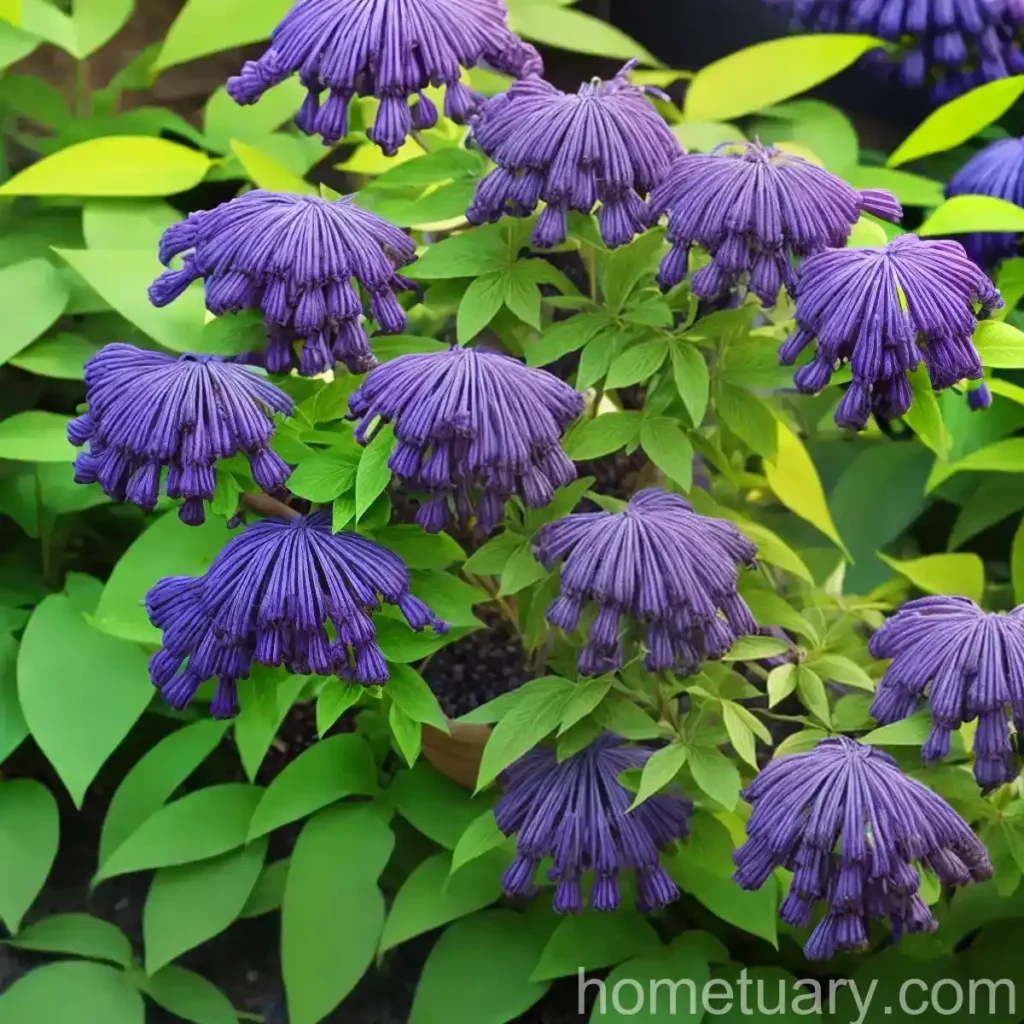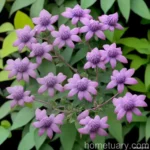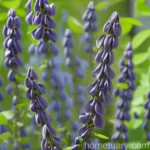Everything You Need to Know About Indigo (Indigofera kirilowii)
Indigofera kirilowii is a fascinating plant that has garnered attention for its cultural, medicinal, and ecological significance. This perennial plant is not only valuable for its aesthetic appeal in gardens and landscapes but also for its historical use as a natural dye and its contributions to biodiversity and nitrogen fixation in natural ecosystems. In this comprehensive guide, we will explore all aspects of indigo, from its cultivation and care to its rich cultural heritage and ecological benefits.
What is Indigo (Indigofera kirilowii)?
Indigofera kirilowii, commonly known as indigo, is a species of flowering plant in the Fabaceae family. It is native to East Asia and is known for its unique indigo dye-producing properties. Indigo has a rich history of traditional use as a natural dye, herbal remedy, and ornamental plant. The plant’s delicate pink to purple flowers and lush foliage make it a popular choice for gardeners and landscape designers seeking to add a touch of elegance and ecological value to their outdoor spaces.
Key Takeaways – Indigo (Indigofera kirilowii)
Before diving into the specifics of cultivating and caring for indigo, let’s highlight the key takeaways about this remarkable plant:
- Cultivation: Indigofera kirilowii can be cultivated in various climates, and its nitrogen-fixing abilities make it a valuable addition to sustainable gardening practices.
- Uses: The plant has diverse uses, including traditional dye production, herbal remedies, and ornamental landscaping.
- Water: Indigofera kirilowii has moderate water needs and is adaptable to different moisture levels.
- Sunlight: It thrives in full to partial sunlight, making it suitable for a range of garden settings.
- Fertilizer: Minimal fertilizer is typically required for indigo, thanks to its ability to fix nitrogen in the soil.
- Soil: Well-draining, slightly acidic soil is ideal for promoting healthy growth.
- Pruning: Pruning is essential to maintain the plant’s shape and encourage prolific flowering.
- Propagation: Indigo can be propagated from seeds or cuttings, providing an opportunity for home gardeners to expand their plant collection.
- Container: The plant can thrive in containers, offering flexibility for those with limited outdoor space.
Now, let’s delve into the details of cultivating and caring for indigo, exploring each aspect in depth.
Culture
Cultivating indigo (Indigofera kirilowii) requires an understanding of its environmental preferences and growth patterns. By considering the plant’s cultural requirements, gardeners can create an optimal environment for its development and encourage its beneficial ecological contributions.
Uses
Before delving into the specific cultural requirements of indigo, let’s explore the diverse uses of this plant, which contribute to its global significance:
- Dye Production: Indigo has been historically valued for its natural dye, commonly used to color fabrics and textiles. The dyeing process, which involves extracting the pigment from the plant’s leaves, has been an integral part of various cultures for centuries.
- Medicinal Properties: In traditional medicine, parts of the indigo plant are used to treat various ailments and conditions, highlighting its potential medicinal value.
- Ornamental Plant: With its attractive foliage and beautiful flowers, indigo is a popular choice for landscaping and garden design, adding visual appeal and ecological benefits to outdoor spaces.
- Nitrogen Fixation: Indigofera kirilowii contributes to nitrogen fixation in the soil, enhancing soil fertility and supporting the growth of other plants in the ecosystem.
Understanding these uses underscores the plant’s cultural and ecological significance, shaping our approach to its cultivation and care.
Water
Proper watering is crucial for the health and vigor of indigo plants. While indigo is adaptable to different moisture levels, maintaining a balanced watering routine is essential for promoting healthy growth and flowering.
Water Needs:
- Indigofera kirilowii has moderate water needs, requiring regular watering to keep the soil consistently moist, especially during the growing season.
- Consistent moisture is crucial for promoting lush foliage and prolific flowering.
- It is essential to avoid overwatering, as excessive moisture can lead to root rot and other water-related issues.
By monitoring the plant’s water requirements and adjusting the watering schedule based on environmental conditions, gardeners can ensure the plant’s optimal hydration and growth.
Sunlight
Sunlight plays a vital role in the growth and development of indigo plants. Understanding their sunlight requirements is crucial for selecting an ideal planting location and ensuring robust, healthy growth.
Sun Exposure:
- Indigofera kirilowii thrives in full to partial sunlight, requiring at least 6 hours of direct sunlight daily for best results.
- Adequate sunlight promotes robust foliage and vibrant flowering, contributing to the plant’s ornamental and ecological value.
- While it can tolerate partial shade, optimal sunlight exposure is essential for maximizing its ornamental and ecological potential.
Selecting a planting location that provides the necessary sunlight exposure is key to promoting the plant’s overall health and vitality.
Fertilizer
Indigofera kirilowii’s nitrogen-fixing abilities reduce its reliance on external fertilization. However, understanding the plant’s minimal fertilizer needs and potential supplementary requirements is crucial for promoting healthy growth and blooming.
Fertilization Guidelines:
- Indigofera kirilowii typically requires minimal fertilizer, thanks to its nitrogen-fixing properties. However, a balanced, slow-release fertilizer can be applied during the growing season to support vigorous growth and flowering.
- Fertilizer application should be approached with caution, as excessive nitrogen can inhibit the plant’s natural nitrogen fixation and lead to imbalanced growth.
By adopting a conservative approach to fertilization and leveraging the plant’s nitrogen-fixing capabilities, gardeners can foster healthy, environmentally conscious growth.
Soil
The soil composition and quality significantly influence the health and growth of indigo plants. Understanding the plant’s soil preferences and making suitable soil amendments are critical for creating an optimal growing environment.
Soil Requirements:
- Well-draining, slightly acidic soil with a pH range of 6.0 to 7.0 is ideal for promoting healthy indigo growth.
- Soil with good fertility and structure supports robust foliage and flowering, contributing to the plant’s ornamental and ecological value.
- Incorporating organic matter into the soil can enhance its fertility and provide essential nutrients for the plant’s development.
Additionally, with its nitrogen-fixing properties, indigofera kirilowii contributes to soil fertility and the overall health of the ecosystem in which it is cultivated.
Pruning
Pruning is an essential aspect of indigofera kirilowii care, helping to maintain the plant’s shape, promote flowering, and manage its overall growth. By following proper pruning techniques, gardeners can ensure the plant’s aesthetic appeal and long-term vitality.
Pruning Guidelines:
- Regular pruning of spent flowers and leggy growth encourages continuous blooming and maintains the plant’s aesthetic appeal.
- It is essential to remove old, diseased, or damaged foliage to promote the plant’s overall health and vigor.
- Pruning can be performed in early spring or late winter to prepare the plant for its active growing season and promote prolific flowering.
Proper pruning not only enhances the plant’s appearance but also contributes to its overall health and resilience.
Propagation
Indigofera kirilowii can be propagated from seeds or cuttings, providing opportunities for home gardeners to expand their plant collection and share the benefits of this versatile plant with others.
Propagation methods:
- From Seeds: Indigo seeds can be sown directly in well-prepared soil in the garden or started indoors in containers. Germination typically occurs within 7-14 days under optimal conditions.
- From Cuttings: Stem cuttings can be taken from healthy, mature indigofera kirilowii plants and rooted in well-draining soil or a suitable rooting medium.
Understanding the propagation methods enables gardeners to propagate indigo successfully and ensure a steady supply of these valuable plants in their gardens and landscapes.
Container Popularity
Indigofera kirilowii’s adaptability to container cultivation makes it a popular choice for gardeners with limited outdoor space. By growing indigo in containers, individuals can enjoy the plant’s aesthetic and ecological benefits in various settings, from urban balconies to suburban gardens.
Container Cultivation Benefits:
- Flexibility: Container cultivation allows individuals with limited outdoor space to enjoy the beauty and functionality of indigofera kirilowii.
- Mobility: Containers offer the advantage of mobility, enabling gardeners to move the plant to different locations to optimize sunlight exposure and aesthetic display.
- Ornamental Value: Indigo plants’ lush foliage and delicate flowers make them excellent candidates for container gardening, adding visual appeal and ecological value to outdoor spaces.
Cultivating indigo in containers presents an exciting opportunity for individuals to incorporate this versatile plant into their living spaces.
Common Diseases
Indigofera kirilowii, like any plant, is susceptible to certain diseases that can affect its overall health and appearance. By recognizing common diseases and understanding preventive measures, gardeners can safeguard their indigo plants and promote long-term vitality.
Disease Diagnosis
Identifying common diseases and their symptoms is crucial for timely intervention and effective disease management. Some common diseases that may affect indigo plants include:
- Powdery Mildew: This fungal disease presents as a white, powdery substance on the plant’s foliage, leading to stunted growth and reduced vigor.
- Leaf Spot: Leaf spot diseases can cause circular or irregularly shaped lesions on the plant’s leaves, affecting its overall aesthetics and photosynthetic capacity.
- Root Rot: Excessive moisture or poorly draining soil can contribute to root rot, leading to wilting, yellowing foliage, and overall decline in the plant’s health.
Regular monitoring of indigo plants and prompt diagnosis of any potential diseases enable gardeners to implement appropriate measures to protect their plants.
Common Pests
Pests can pose a threat to indigofera kirilowii, causing damage to its foliage, flowers, and overall health. By identifying common pests and implementing integrated pest management strategies, gardeners can effectively mitigate pest-related issues and promote a thriving indigo plant.
Common Pests:
- Aphids: These small, soft-bodied insects can congregate on the plant’s new growth and feed on sap, leading to stunted growth and distorted foliage.
- Spider Mites: Spider mites can cause stippling on the plant’s leaves, leading to reduced vigor and potential defoliation.
- Caterpillars: Some caterpillar species may feed on indigo foliage, causing visible damage and compromising the plant’s overall health.
Implementing pest monitoring and control measures, such as physical removal, insecticidal soaps, or botanical insecticides, can help manage pest populations and protect indigo plants from pest-related damage.
Botanist’s Tips
Drawing on botanical expertise and practical experience, botanists offer valuable insights and recommendations for cultivating and caring for indigofera kirilowii. These tips can help gardeners optimize the plant’s growth, health, and ecological contributions.
Botanist’s Tips:
- Promoting Nitrogen Fixation: Leveraging indigo’s nitrogen-fixing properties to enhance soil fertility and support the health of neighboring plants in the ecosystem.
- Balanced Watering: Monitoring the plant’s water needs and maintaining balanced moisture levels to promote healthy growth and flowering.
- Integrated Pest Management: Implementing a holistic approach to pest management, including regular monitoring and targeted control measures.
By incorporating these botanist’s tips into their cultivation practices, gardeners can maximize the ecological and ornamental potential of indigofera kirilowii.
Fun Facts
Indigofera kirilowii boasts a rich cultural history and ecological significance, with several intriguing and little-known facts that highlight its unique attributes and value. Exploring these fun facts enhances our appreciation for this remarkable plant and its diverse contributions.
Fun Facts about Indigo (Indigofera kirilowii):
- Dye Production: Indigo has been used for centuries to create a natural blue dye, and its historical significance in various cultures underscores its global importance.
- Medicinal Uses: Certain parts of the indigo plant have been utilized in traditional medicine, reflecting its potential therapeutic properties.
- Nitrogen Fixation: The plant’s ability to fix nitrogen in the soil contributes to sustainable gardening practices and soil fertility.
- Ornamental Appeal: Indigofera kirilowii’s delicate flowers and lush foliage make it a sought-after ornamental plant, valued for its visual appeal and ecological benefits.
Exploring these fun facts broadens our understanding of indigo’s cultural, ecological, and aesthetic significance, enriching our connection to this versatile plant.
Links to External Resources
For further information about indigofera kirilowii and related topics, you can explore the following external resources:
- Royal Horticultural Society: Indigofera kirilowii
- The Herb Society: Indigofera kirilowii Medicinal Uses
- International Dye Museum: Indigo Dyeing Techniques
- Botanical Gardens Conservation International: Indigofera Conservation
- Ethnobotany and Indigenous Knowledge Resources
- Wildlife Gardening Resources and Guides
- Sustainable Agriculture and Organic Gardening Practices
These external resources offer valuable insights into indigofera kirilowii, ranging from its ornamental and ecological value to its historical and cultural significance.
In conclusion, Indigofera kirilowii, commonly known as indigo, is a multifaceted plant with cultural, ecological, and ornamental significance. By understanding its cultivation and care requirements, appreciating its diverse uses, and recognizing its ecological contributions, gardeners and enthusiasts can cultivate and celebrate this valuable plant, fostering a deeper connection to its rich heritage and ecological importance. Whether used for traditional dye production, medicinal purposes, or ornamental landscaping, indigofera kirilowii continues to captivate and inspire individuals with its timeless allure and ecological benefits.
As we continue to explore the multifaceted world of plants, let’s embark on a journey of discovery and appreciation for the remarkable indigofera kirilowii, celebrating its cultural heritage, ecological contributions, and diverse uses.
Remember, the beauty and resilience of plants such as indigofera kirilowii reflect the intricate tapestry of nature and the enduring connections between plants and people.
Plant Name: “Indigo (Indigofera kirilowii)”
In this comprehensive guide, we have covered the various aspects of cultivating, caring for, and appreciating Indigofera kirilowii, also known as indigo. From its cultural and ecological significance to its diverse uses in traditional dye production, herbal remedies, and ornamental plantings, indigofera kirilowii continues to enrich our lives and landscapes with its timeless allure and ecological contributions. Whether cultivating it in gardens, exploring its historical significance, or seeking to enhance biodiversity and soil fertility, the indigo plant offers a world of possibilities and connections.
Please, feel free to explore the external resources provided to deepen your understanding and connection to Indigofera kirilowii and the broader world of plants, nature, and cultural heritage.
Remember, the beauty and resilience of plants such as Indigofera kirilowii reflect the intricate tapestry of nature and the enduring connections between plants and people.
The markdown formatting can be viewed by accessing the ‘Copy Markdown’ feature present in the AI dungeon interface.















